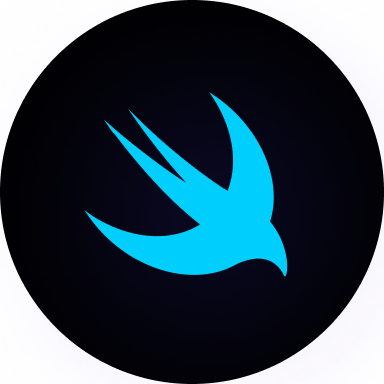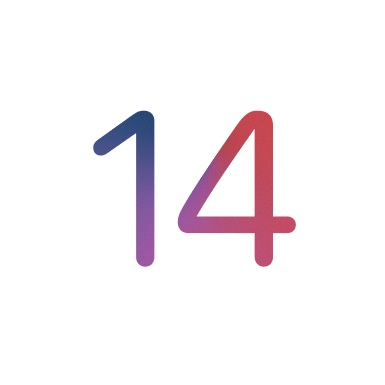Flex, Grid and Adaptive Layout
Add to favorites
Working with adaptive CSS layout techniques without code
Play video
Build a full site in Webflow
1
Build a full site in Webflow
7:45
2
Getting Started with Webflow
28:15
3
Flex, Grid and Adaptive Layout
18:46
4
Components, Nav Bar & Lightbox
15:41
5
Tabs and Customizations
19:55
6
Transitions and States
17:21
7
Animations and Interactions
20:09
8
Scroll Parallax
11:41
9
Start Animation
9:08
10
Lottie Animations
16:35
11
Design with Data and CMS
12:17
12
Symbols, Links and Pages
14:16
13
Forms and Submit Data
13:30
14
Ecommerce and Custom Code
13:28
About this Course
In this free Webflow course, I'm teaching you how to implement and deploy a real site for Angle from scratch without a single line of code. It's going to be a fully functional site with multiple pages, advanced interactions, dynamic data, payments and animated assets from Shape.
Projects

- Final Site
- Getting Started with Webflow
- Flex, Grid and Adaptive Layout
- Components and Nav Bar
- Tabs and Advanced Layout
- Transitions and States
- Animations and Interactions
- Scroll Parallax
- Start Animation
- Lottie Animations
- Design with Data and CMS
- Symbols, Links and Pages
- Forms and Submit Data
- Ecommerce and Custom Code
Flex vs Grid
Flex is good for stacking elements in one direction and wrapping. Grid allows you to stack both horizontally and vertically at the same time. It's great for a gallery type of layout requiring gap distances. It's also a perfect replacement for the old HTML tables. Absolute positioning allows you to float elements on top of each other.
You can learn more about Flexbox and CSS Grid on the CSS Tricks site. It has a comprehensive list guide on how to use its features.
Getting Started
In this section we'll be learning about best practices in terms of layout. Currently, we're using margins and padding, one of the rules for reusable elements is to avoid using both of these. Instead, we should use CSS grid and flex whenever possible because not every element will need those exact margins or padding. So, we'll start by setting the margins for the Text and the Heading to 0.
Grid
Select the Content Block. In Display, select the third option i.e. Grid. For now, we don't want a gallery layout, in Columns, remove the second one by clicking on the bin icon. Enter 30 as the value for Rows in Gap. To not have the Download button take up the entire width, click on Content Block and in Alignment, select the 1st option in the second row. i.e. Align items to left.
Logo Block
Select the Content Block and add a Div Block element to it. By default it uses Block, go to Display and choose the 2nd option i.e. Flex. We'll be adding logos in this Div Block. To do so, select the Div Block and add an image element to it. Select the Sketch logo from the Assets we copied earlier. Right click and duplicate the image element twice. To replace the Sketch logo with the XD and Figma ones, simply click on the cog icon on the image element, then on 'Replace Image' button and select the respective images.
Flex
Select the Div Block which is already set to Flex. Set its width to 100%. Now, go to Justify and select the 4th option i.e. Space Between which is the perfect for us in this case. Please feel free to try out the other options to learn more about them. Since, the width is too big, replace 100% with 186px.
Purchase Button
Currently, we're using padding for the Purchase Button. We'll be replacing it with Flex instead. Select Purchase and in Display, choose the Flex option. Select Vertical as the Direction and remove the padding we had previously. Set Justify to Center. This will make the button more adaptive compared to when we were setting the padding manually.
Float Elements
In this step, we'll learn how to make elements float on top of each other. In Purchase, add a new Div Block. In the position dropdown, select Absolute. Absolute means that the element is going to float and that it won't take any physical size unlike the elements that don't have position absolute. In Position, set Left to 0.
Relative Positioning
To make sure that it's positioned against the container and not against the entire canvas, select Purchase and give it a Position of Relative instead of Static.
Card Icon Block
Now, we'll style the box. Select Div Block 2, set its width to 64 and height to 32. Set the background color to #4312F2 and the border-radius to 10. Click on the '+' icon and choose the Icon-Card.svg file. Set its width to Auto, choose the 'X' option in Tile and Position it to left-middle. In Position, enter 34 as the value for Left. Go to the Position property for Div Block 2 and replace 0 with -15.
Media Queries
The final step in the section is to make the content adaptive. We'll start with tablets, click on the tablet icon to edit. Select Hero and then select the Background1. In position, replace 50% with 44% as the value of Left. Do the same for the Background2, replace 100% with 70%.
Inherit
You'll notice that the properties are in Orange while the Desktop properties are in Blue, this means that the properties were inherited from Desktop. Any change you make to the tablet screen will be inherited by the mobile devices as well but it will have no effect on the Desktop.
Mobile Landscape
Let's customize mobile landscape. Click on the Mobile-Landscape icon, select Container and give it a padding-left as well as padding-right of 20. Now, select Hero and enter 40% instead of 44% for Background1. To center the content, select Container and in Display, choose Flex. Justify the content to the Center by choosing the 2nd option in Justify.
Mobile Portrait
To make mobile portrait adaptive, start off with selecting the Content Block and set its width to 280. Now, select the Text Span and reduce the font-size from 140 to 120. Lastly, set the font-size for the Heading to 28. Publish the site and resize your browser window to test the responsiveness.
Conclusion
In this section we learned a lot about flex and grid layout, about absolute positioning and media queries. In the next one, we'll learn about navigation with logo and menus. We'll also learn how to create a hamburger menu for smaller screen sizes.
Steps
CSS Grid
Delete column
Gap Rows 30
h1 margin top bottom Auto
Remove margins
Align self Start
Flex
Width 100%
Change to 3 columns
Insert Image in each column
Change to Flex
Purchase
Selector Purchase
Padding top 0 (Reset)
Change to Flex, Vertical
Justify Center
Launch Promo Margin top 3px
Purchase Icon
Create Div Block
64 x 32px
Background #4312f2
Border Radius 10px
Background Icon-Card.svg, Width Auto, Left 34px, Top 50%, Don't Tile
Position Absolute, Top 19px, left -15px
Set Container to Position Relative
Media Queries
Tablet
- Background2.svg Left 70%,
- Background1.svg Left 44%
Mobile Landscape
- Background1.svg Left 40%
- Container, Flex, Justify Center - Padding L20, R20,
Mobile Portrait
- Content Block W 280px
- h1 120px
- h2 28px
Templates and source code
Download source files
Download the videos and assets to refer and learn offline without interuption.
Design template
Source code for all sections
Video files, ePub and subtitles
Assets
Videos
ePub
Subtitles
1
Build a full site in Webflow
Design and animate a high converting landing page with advanced interactions, payments and CMS
7:45
2
Getting Started with Webflow
Building your first app without code with Webflow
28:15
3
Flex, Grid and Adaptive Layout
Working with adaptive CSS layout techniques without code
18:46
4
Components, Nav Bar & Lightbox
Use pre-built controls like Nav Bar, Tabs, Slider and Lightbox
15:41
5
Tabs and Customizations
Create a highly customized tabbed navigation with using Components
19:55
6
Transitions and States
Learn how to use hover interactions and states in Webflow
17:21
7
Animations and Interactions
Create an interactive 3D effect using the Webflow Interactions
20:09
8
Scroll Parallax
Move elements during scroll and when elements are in view
11:41
9
Start Animation
Create a beautiful on-load animation using opacity and move
9:08
10
Lottie Animations
Create advanced interactions using animated assets
16:35
11
Design with Data and CMS
Loop through data from the content management system in Webflow
12:17
12
Symbols, Links and Pages
Create powerful reusable elements across multiple pages
14:16
13
Forms and Submit Data
Create a newsletter and login form that submits data
13:30
14
Ecommerce and Custom Code
Build a purchase experience and embed code in Webflow
13:28
Meet the instructor
We all try to be consistent with our way of teaching step-by-step, providing source files and prioritizing design in our courses.
Meng To
I design, code and write
Meng To is the author of Design+Code. Meng started off his career as a self-taught designer from Montreal and eventually traveled around the world for 2 years as his US VISA was denied. During his travels, he wrote a book which now has 35,000 readers.
40 courses - 194 hours

Master AI Prompting for Stunning UI
Learn how to leverage AI tools like Aura for creating beautiful designs, working with templates, and experimenting with advanced prompts. A concise guide for designers and developers to level up their skills.
10 hrs

Build SwiftUI apps for iOS 18 with Cursor and Xcode
In this course, we'll explore the exciting new features of SwiftUI 6 and Xcode 16 for building iOS 18 apps. From mesh gradients and text animations to ripple effects, you'll learn how to create polished, highly custom apps using the latest workflows. We'll also dive into using Cursor and Claude AI for AI-driven coding, helping you start strong and customize your apps.
5 hrs

Create your Dream Apps with Cursor and Claude AI
Learn to build your dream web apps from the ground up using Cursor, Claude AI, and a suite of powerful AI tools. This course covers everything you need, including React for frontend development, Firebase for backend integration, and Stripe for handling payments. You’ll also dive into advanced AI tools like Claude Artifacts, Galileo AI, v0.dev for UI, Ideogram for design generation, and Cursor Composer for full-scale development.
6 hrs

Build a React Site from Figma to Codux
In this course, you'll learn to build a website from scratch using Codux, starting with a Figma template. You’ll master responsive design, collaborate with developers on a real React project, export CSS from Figma using Locofy, set up breakpoints with media queries, add CSS animations, improve SEO, create multiple pages with React Router, and publish your site. By following best practices, you’ll bridge design and development, improve your web design skills.
2 hrs

Create 3D UI for iOS and visionOS in Spline
Comprehensive 3D Design Course: From Basics to Advanced Techniques for iOS and visionOS using SwiftUI
3 hrs

Master No-Code Web Design with Framer
In this free Framer course, you'll learn to create modern, user-friendly interfaces. Start with dark mode and glass designs, then move from Figma to Framer, using vectors and auto layout for responsive websites. Add animations, interactive buttons, and custom components with code. Finally, you'll craft a design system suitable for teamwork or solo projects, all in a straightforward and practical approach.
4 hrs

Build SwiftUI Apps for iOS 17
In this course, we’ll be exploring the fresh and exciting features of SwiftUI 5! As we craft a variety of iOS apps from the ground up, we'll delve deep into the treasure trove that is SwiftUI's user interface, interactions, and animations.
4 hrs

Build Beautiful Apps with GPT-4 and Midjourney
Design and develop apps using GPT-4 and Midjourney with prompts for SwiftUI, React, CSS, app concepts, icons, and copywriting
4 hrs

Build SwiftUI apps for iOS 16
Create animated and interactive apps using new iOS 16 techniques using SwiftUI 4 and Xcode 14
5 hrs

Build a 3D Site Without Code with Framer
Design and publish a responsive site with 3D animation without writing a single line of code
3 hrs

Create 3D Site with Spline and React
Design and code a landing page with an interactive 3D asset using Spline and CodeSandbox
1 hrs

Build an Animated App with Rive and SwiftUI
Design and code an iOS app with Rive animated assets, icon animations, custom layouts and interactions
3 hrs

Build a SwiftUI app for iOS 15 Part 3
Design and code a SwiftUI 3 app with custom layouts, animations and gestures using Xcode 13, SF Symbols 3, Canvas, Concurrency, Searchable and a whole lot more
4 hrs

Build a SwiftUI app for iOS 15 Part 2
Design and code a SwiftUI 3 app with custom layouts, animations and gestures using Xcode 13, SF Symbols 3, Canvas, Concurrency, Searchable and a whole lot more
3 hrs

Build a SwiftUI app for iOS 15
Design and code a SwiftUI 3 app with custom layouts, animations and gestures using Xcode 13, SF Symbols 3, Canvas, Concurrency, Searchable and a whole lot more
4 hrs

React Livestreams
Learn how we can use React Hooks to build web apps using libraries, tools, apis and frameworks
4 hrs

Design Founder Livestreams
A journey on how we built DesignCode covering product design, management, analytics, revenue and a good dose of learning from our successes and failures
2 hrs

SwiftUI Advanced Handbook
An extensive series of tutorials covering advanced topics related to SwiftUI, with a main focus on backend and logic to take your SwiftUI skills to the next level
4 hrs

iOS Design Handbook
A complete guide to designing for iOS 14 with videos, examples and design files
2 hrs

SwiftUI Handbook
A comprehensive series of tutorials covering Xcode, SwiftUI and all the layout and development techniques
7 hrs

Build a web app with React Hooks
Learn how we built the new Design+Code site with React Hooks using Gatsby, Netlify, and advanced CSS techniques with Styled Components.
4 hrs

UI Design Handbook
A comprehensive guide to the best tips and tricks for UI design. Free tutorials for learning user interface design.
2 hrs

Figma Handbook
A comprehensive guide to the best tips and tricks in Figma. Not affiliated with or endorsed by Figma, Inc.
6 hrs

SwiftUI for iOS 14
Build a multi-platform app from scratch using the new techniques in iOS 14. We'll use the Sidebar and Lazy Grids to make the layout adaptive for iOS, iPadOS, macOS Big Sur and we'll learn the new Matched Geometry Effect to create beautiful transitions between screens without the complexity. This course is beginner-friendly and is taught step-by-step in a video format.
3 hrs

SwiftUI Livestreams
This is a compilation of the SwiftUI live streams hosted by Meng. Over there he talks and teaches how to use design systems, typography, navigation, iOS 14 Design, prototyping, animation and Developer Handoff.
19 hrs

UI Design Livestreams
This is a compilation of the UI live streams hosted by Meng. Over there he talks and teaches how to use design systems, typography, navigation, iOS 14 Design, prototyping, animation and Developer Handoff.
26 hrs

UI Design for Developers
In this course we'll learn how to use design systems, set up break points, typography, spacing, navigation, size rules for adapting to the iPad, mobile and web versions, and different techniques that translate well from design to code.
3 hrs

Build an app with SwiftUI Part 3
This course was written for designers and developers who are passionate about design and about building real apps for iOS, iPadOS, macOS, tvOS and watchOS. SwiftUI works across all of those platforms. While the code is not a one-size-fits-all, the controls and techniques involved can apply to all platforms. It is beginner-friendly, but it is also packed with design tricks and cool workflows about building the best UIs and interactions.
4 hrs

Build an app with SwiftUI Part 2
This course was written for designers and developers who are passionate about design and about building real apps for iOS, iPadOS, macOS, tvOS and watchOS. SwiftUI works across all of those platforms. While the code is not a one-size-fits-all, the controls and techniques involved can apply to all platforms. It is beginner-friendly, but it is also packed with design tricks and cool workflows about building the best UIs and interactions.
4 hrs

Build a full site in Webflow
Webflow is a design tool that can build production-ready experiences without code. You can implement CSS-driven adaptive layouts, build complex interactions and deploy all in one tool. Webflow also comes with a built-in content management system (CMS) and Ecommerce for creating a purchase experience without the need of third-party tools.
3 hrs

Advanced Prototyping in ProtoPie
ProtoPie is a cross-platform prototyping tool that creates prototypes nearly as powerful as those made with code, with half of the efforts, and zero code. It's perfect for designers who want to quickly experiment with advanced interactions using variables, conditions, sensors and more.
3 hrs

Build an app with SwiftUI Part 1
This course was written for designers and developers who are passionate about design and about building real apps for iOS, iPadOS, macOS, tvOS and watchOS. SwiftUI works across all of those platforms. While the code is not a one-size-fits-all, the controls and techniques involved can apply to all platforms. It is beginner-friendly, but it is also packed with design tricks and cool workflows about building the best UIs and interactions.
4 hrs

React Native for Designers Part 2
React Native is a popular Javascript framework that builds on top of React by using native components to create a real mobile app indistinguishable from one made using Xcode or Android Studio. The main difference with native development is that you get to use CSS, hot-reload, Javascript and other familiar techniques that the Web has grown over the past decades. Most importantly, you're building for both iOS and Android using the same codebase.
3 hrs

React Native for Designers
React Native is a popular Javascript framework that builds on top of React by using native components to create a real mobile app indistinguishable from one made using Xcode or Android Studio. The main difference with native development is that you get to use CSS, hot-reload, Javascript and other familiar techniques that the Web has grown over the past decades. Most importantly, you're building for both iOS and Android using the same codebase.
5 hrs

Design System in Figma
Learn how to use and design a collaborative and powerful design system in Figma. Design Systems provide a shared library of reusable components and guidelines and that will let you build products much faster
3 hrs

React for Designers
Learn how to build a modern site using React and the most efficient libraries to get your site/product online. Get familiar with Grid CSS, animations, interactions, dynamic data with Contentful and deploying your site with Netlify.
3 hrs

Swift Advanced
Learn Swift a robust and intuitive programming language created by Apple for building apps for iOS, Mac, Apple TV and Apple Watch
9 hrs

Learn Swift
Learn Swift a robust and intuitive programming language created by Apple for building apps for iOS, Mac, Apple TV and Apple Watch
4 hrs

Learn Sketch
Learn Sketch a design tool entirely vector-based and focused on user interface design
5 hrs

Learn iOS 11 Design
Learn colors, typography and layout for iOS 8
1 hrs
